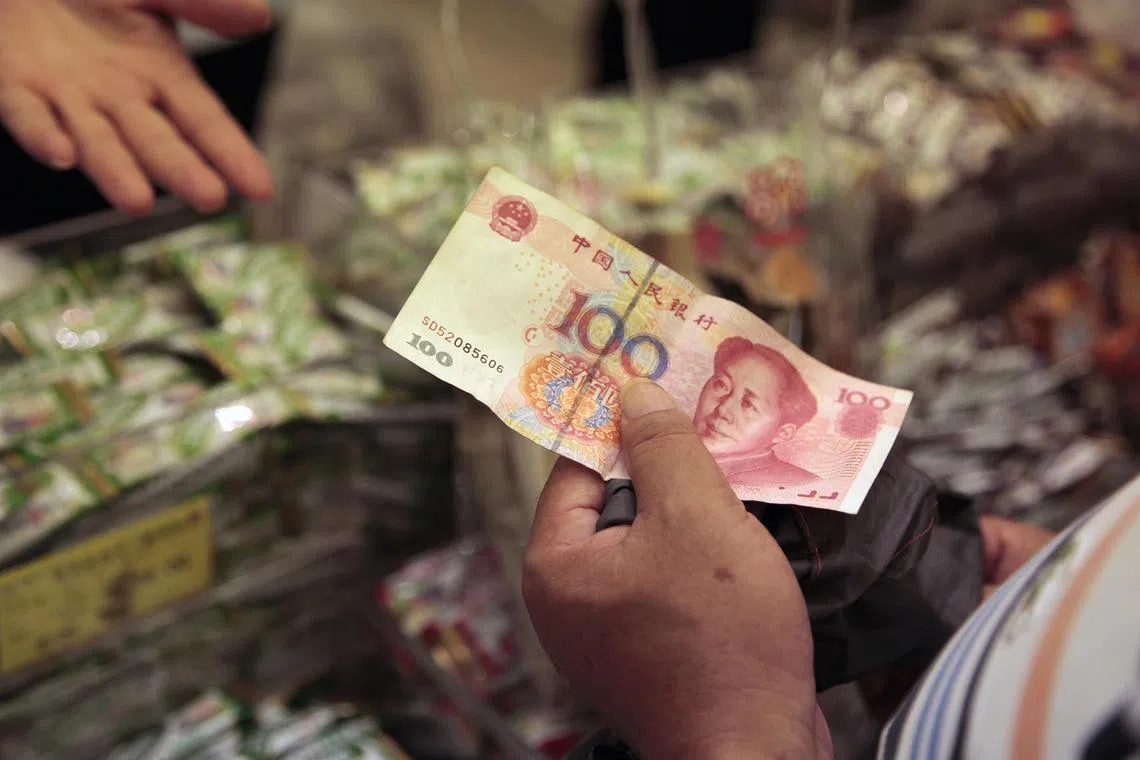China slides to brink of deflation, adding to speculation about economic stimulus
Sign up now: Get ST's newsletters delivered to your inbox

China's core inflation, which excludes volatile food and energy costs, slowed to 0.4 per cent in June from 0.6 per cent.
PHOTO: BLOOMBERG
Follow topic:
BEIJING – China’s consumer inflation rate was flat in June, while factory-gate prices fell further, fuelling concerns about deflation risks and adding to speculation about potential economic stimulus.
The consumer price index was unchanged in June from a year earlier, according to data released by the National Bureau of Statistics (NBS) on Monday. This was the weakest rate since February 2021, when slumping pork costs dragged on the index.
Core inflation, which excludes volatile food and energy costs, slowed to 0.4 per cent from 0.6 per cent. Producer prices fell 5.4 per cent from a year earlier, the deepest pace since December 2015.
“The risk of deflation is very real,” said Pinpoint Asset Management chief economist Zhang Zhiwei.
Both gauges add to evidence that the recovery is weakening, with concerns about deflation weighing on confidence. This is likely to spur more speculation about what potential stimulus may be on the cards to shore up the economy.
“Today’s data certainly argues for more policy easing, which policymakers are already doing, but only in a measured manner,” said Ms Michelle Lam, Greater China economist at Societe Generale.
Producers have already spent months contending with lower commodity prices and weak demand at home and abroad. If consumers and businesses continue to hold back from spending or investment in the hope of prices getting lower, this could lead to a self-fulfilling price dropping spiral.
A key drag on consumer prices in June was pork prices. The cost of the meat – a staple in the Chinese diet – fell 7.2 per cent in June from a year earlier, more than May’s 3.2 per cent decrease.
The government has been trying to put a floor under pork price declines, saying last week that it would buy more pork for state reserves to boost demand.
The producer price deflation was fuelled by extended drops in international commodity prices. In a statement, NBS statistician Dong Lijuan cited a continued fall in the costs of oil and coal, as well as a high base of comparison with 2022.
Aside from a brief period of deflation in early 2021, China has not experienced prolonged consumer price deflation since 2009 amid the global financial crisis.
Back then, Beijing introduced a 4 trillion yuan stimulus package focused on infrastructure and upgrading industry. While that plan bolstered growth at the time, it also led local governments to borrow more than they were legally allowed, causing debt to balloon.
The scope for policy to stem the threat of deflation is more limited this time round, in part given concerns about debt risks.
Most measures to support the economy have been limited, with the central bank cutting a key policy interest rate in June by only a small amount. The government has also extended tax breaks for buyers of electric cars.
Premier Li Qiang spoke last week to some Chinese economists about potential aid, although he emphasised that policies would be “targeted, comprehensive and well-coordinated” – reinforcing expectations that stimulus would not be massive.
The government needs to shift its focus from supply-side policies to measures that address the demand problems, said ANZ senior China strategist Xing Zhaopeng.
The Chinese authorities have long supported companies by using targeted lending tools such as those intended to aid the manufacturing and renewable energy sectors. Meanwhile, officials have often shunned policies intended to give consumers direct help, such as subsidies.
“China is facing excess supply now,” Mr Xing said, warning of an intensifying “deflation-recession loop”. BLOOMBERG

